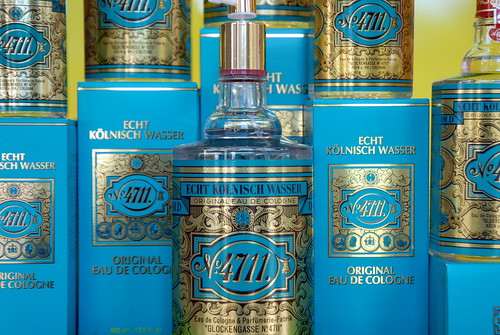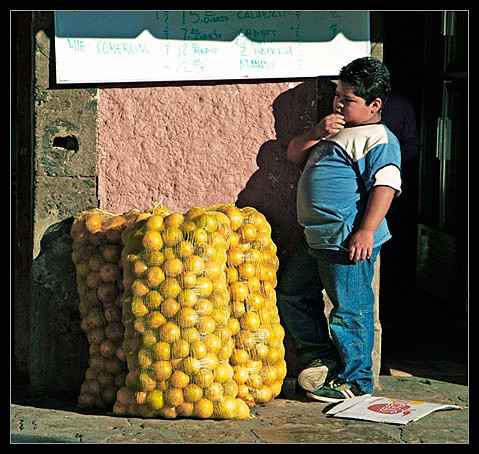4711 Echt Kölnisch Wasser
As mentioned earlier, the earliest alcohol based perfumes were the Aqua Mirabillis – the miracle water taken both internally and externally. The most famous of them all, even if not necessarily the best, is 4711 Echt Kölnisch Wasser.
The story about how this perfume formula came to Muelhens’ (the founder of 4711) hands has become a cliché: in 1792, a Carthusian monk gave this formula of Aqua Mirabillis to Muelhen and his bride as a wedding gift, asking only that they will treat it with the regard it deserved. Muelhens did not underestimate its value, and founded a company to manufacture this formula, in the city of Koln (Cologne) in Germany. In 1796, when the city was occupied by the French, all the houses on the streets were numbered, and the house of Muelhens’ factory was numbered 4711. In 1875 this number was trademarked as the company’s name.
It is hard to say what is it that made the perfume so successful: whether if it clever marketing or a true genious of the fragrance itself, or, alternatively, a karmic blessing from the monk who created it. But all we know is that 4711 has become a staple in almost any household. My grandmother (born in Berlin, 1924) recalls her both her grandmother and mother using it. I also never heard her complain that the fragrance have changed. So perhaps there wasn’t any significant change in the formula, although I won’t be surprised if some synthetic fixatives have made it in. I wouldn’t drink it now, that’s for sure…
As for the scent itself – nowadays it seems neither particularly interesting nor original. It’s a simple, refreshing citrus cologne centered around neroli and petitgrain, which are the key notes here. It is cool and refreshing, with a hint of honeyed sweetness from the nerli, further accentuated by the sweetness of orange and bergamot top notes. Yet, it also has a distinctive astringent, dry and almost minty quality from the petitigrain and the herbal notes of rosemary and lavender. The base is mostly sandalwood and musk, which explains why I never took on to liking 4711 personally. Sandalwood smells terrible on my skin, particularly when paired with neroli. If your skin doesn’t suffer this bias, this would be probably the most valuable staple for hot summer months, as it is sold for very decent price and can be easily found almost in any drugstore, and in Germany you an even find these in an automatic vending machines! You can even still get the Eau de Cologne in those huge original vast of 800ml, where it definitely looks more like a drink than a toiletry. Salut!








